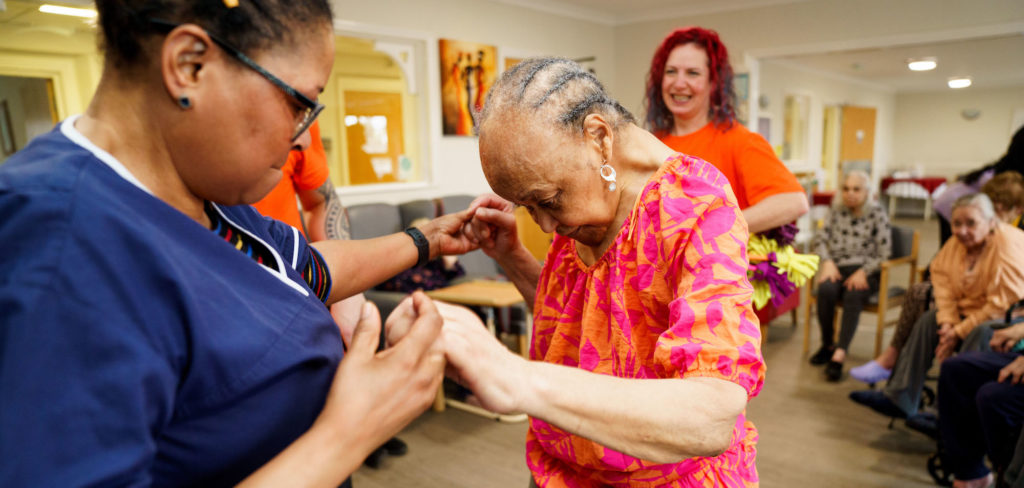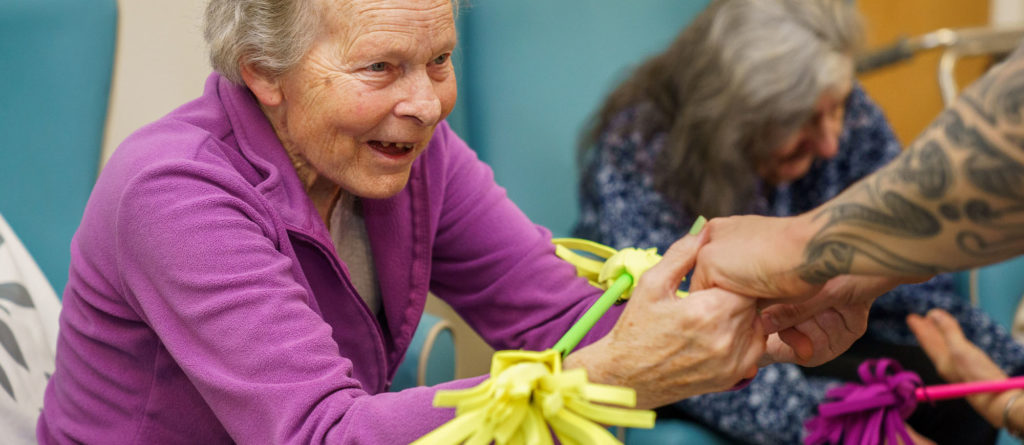The top priority when running your circus workshop is not perfecting skills, but creating a safe, judgement-free space for participants to try new things, play around, and mess up. With experimentation comes inevitable mistakes – it is key to encourage an environment where people feel comfortable being imperfect and having fun. Try putting participants at ease with these strategies:
Making your workshop a welcoming space:

- Greet Everyone and Introduce Yourself – Making sure you give each participant a warm personal welcome as they enter the room, introducing yourself and being clear about what you will do together in the session – although small, this interaction helps encourage participants to be more likely to listen and be attentive. When possible try to use people’s names when you are addressing them
- Make eye contact – ensuring that you are making direct, gentle eye contact to everyone so that they understand that you are making time for them. Always use eye contact when you are working with someone on a one-to-one basis. Observe their body language and adapt the exercise if required to ensure that participants always feel comfortable
- Take your time – don’t rush the activity and go with the flow of the group. Always remember to take your time, allow for pauses so the participants can process what you’re saying. Ensure that you demonstrate the activities clearly
- Gently get the group attention – it can get very noisy during workshops, especially when people are having a lot of fun and conversation. Try not to shout over people as this can be distressing for some. Use methods such as select gestures like waving your arms in the air and slowly one by one others will copy or stop what they’re doing to give you their attention. Other methods include tapping / clapping a rhythm repeatedly for others to join or even singing a song
- Make it clear who’s leading and who’s supporting – there should always be one person leading the activity and others supporting. If a support-person switches to a leader role during the session – this should be clearly communicated and shown to the participants, so that they know where the instructions are coming from
- Encourage, encourage, encourage – At first, residents can sometimes be confused and a bit resistant to the activities. Make sure to calmly and positively reassure them, allow them to take it slow, encourage them to make mistakes and remind them that they don’t have to do it perfectly.
- Managing other staff / helpers – As the session leader, it’s important to communicate clearly to support staff what the session plan is, how they can best support what needs to be achieved in each exercise. Your colleagues working with you in the room are your allies, use them to help you get the attention/focus of the participants so that your directions and instructions are clearly received
- Lead with care and confidence – ensure you can be seen by everyone, try not to cover your face or mouth, speak clearly, at a steady pace and loud enough for everyone to hear. Make eye contact and repetition with a physical demonstration always helps. If you are working with seated participants you may want to consider kneeling or sitting so that you are on the same level as them
- Read the room – When working with the group, always remember to be patient and read the energy of the room. If everyone is quieter than usual play a gentle music track accompanied by a calmer activity before building up to something more energetic
Introducing movement:

- Encourage the group to follow or copy your movement – start with gentle dynamic stretches or gestures of the arms – nothing static to keep the muscles moving and encourage blood flow to warm the body up
- Low impact dancing to music – teach the group a few movements that directly resonate to the lyrics of the music (e.g. when the song says up – you wave your hands up) then let them freestyle inbetween the movements or get the group to teach you some of their movements to add to the song
- Working on dexterity – playing the piano gestures on their legs, in the air etc. opening and closing the hands and stretching the fingers to strengthen and awaken the muscles
- Making connections – suggest residents greet and meet each other across the room, or next to each other by waving or saying hello – then maybe get them to make a physical connection like a hand shake or passing an item to one another (e.g. beach ball)
- Checking in regularly with everyone to make sure that they’re comfortable, they understand what’s happening and are ready to take on the next activity